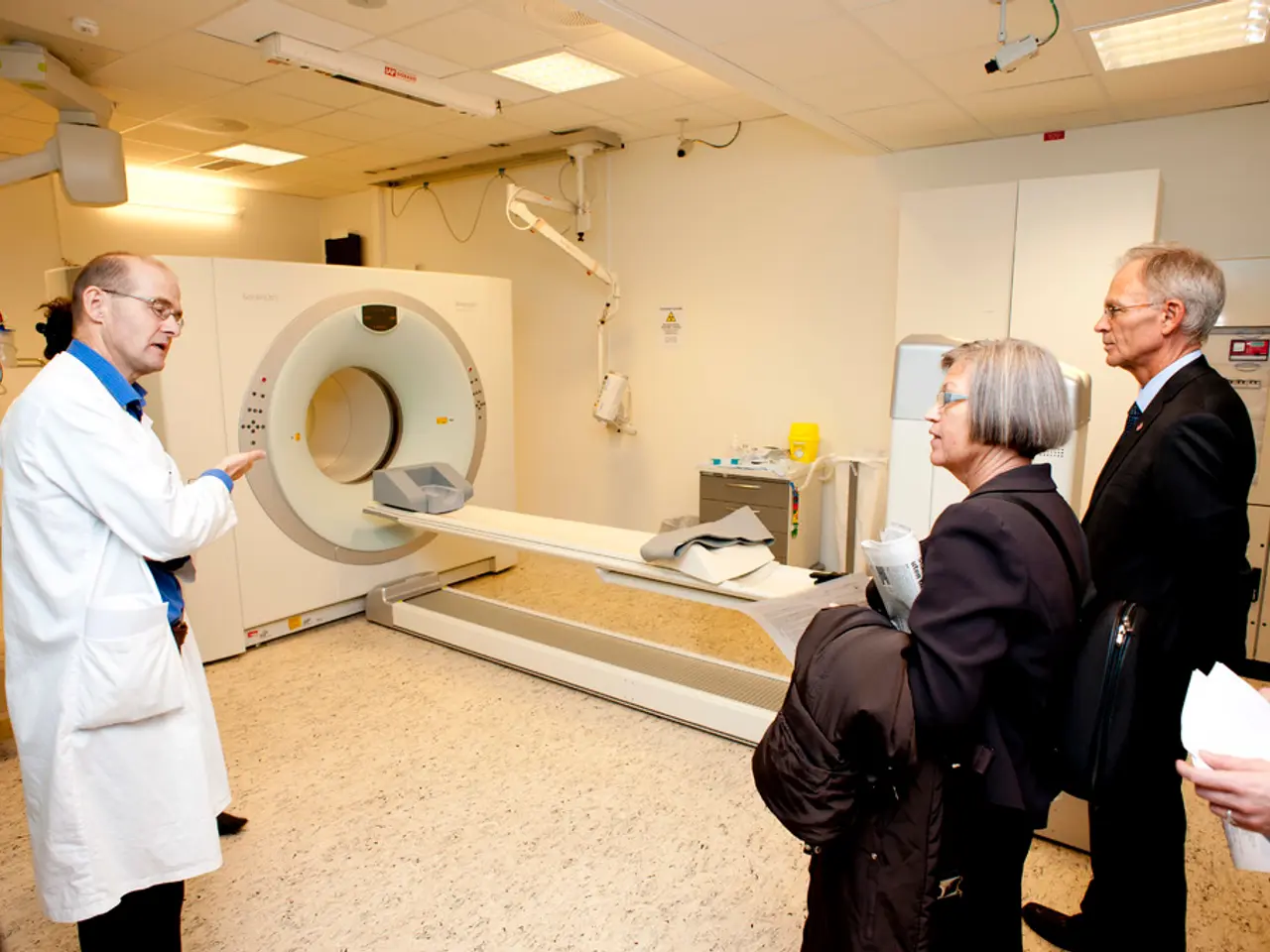Efficient Communication During Medical Urgent Situations in English Language
In the fast-paced world of healthcare, effective communication during emergencies is paramount. A combination of technological advancements, cultural competence training, and patient-centered approaches is revolutionizing the way we communicate in critical situations.
Emotional intelligence development through training programs can help healthcare professionals foster empathy, essential for effective communication during emergencies. Empathy, combined with active listening and clear, accessible language, enhances trust, treatment adherence, and therapeutic outcomes.
Technology plays a significant role in this transformation. Telemedicine, mobile applications, and digital platforms improve communication during medical emergencies, enabling quick and reliable information sharing among medical teams across different locations. AI-powered translation tools provide real-time, accurate translations of medical instructions, ensuring clear communication between healthcare providers and patients with limited English proficiency (LEP).
These tools, such as natural language processing and neural machine translation, can handle many languages and dialects, even recognizing accents and language switching during conversations. Using devices with noise-canceling and hands-free capabilities further ensures clear communication in high-pressure emergency environments. However, solutions must comply with data protection laws, be easy to use, hygienic, and function reliably in noisy settings like emergency rooms.
Complementing technology, healthcare providers benefit from training in cultural competence and communication skills. Understanding medical terms like "hypertension" for high blood pressure or "diabetes mellitus" for diabetes can reduce anxiety and foster better collaboration with the healthcare team for patients and their families.
Non-verbal communication, including body language, gestures, facial expressions, and eye contact, significantly contributes to conveying messages during medical emergencies, especially when language barriers exist. Recognizing non-verbal cues from patients, such as signs of pain, discomfort, or anxiety, allows healthcare providers to make timely and appropriate interventions even if the patient cannot verbalize their needs.
Visual aids, such as diagrams, charts, and tables, can be powerful tools in communicating complex medical information efficiently during emergencies, transcending language barriers and conveying information quickly and effectively.
Regular debriefing sessions after emergencies can allow healthcare teams to discuss emotional challenges, learn from experiences, and enhance empathetic communication skills. Enrolling in first aid courses that include a focus on communication can provide practical experience and confidence in articulating emergency situations.
Learning basic medical vocabulary and phrases in English can help individuals effectively communicate during medical emergencies. Keeping a personal health file, with translations if necessary, including medical history, allergies, and current medications, can assist in conveying critical information quickly and efficiently during medical emergencies.
Continuous improvement and education in the field of medical communication are crucial to ensure the best possible care for patients during emergencies. Effective communication in medical emergencies leads to enhanced patient safety, improved outcomes, and fortified trust between practitioners and patients.
In conclusion, understanding medical terminologies, practicing active listening, leveraging non-verbal communication, utilizing visual aids, and employing technology are all strategies that contribute to effective communication during medical emergencies. Medical institutions should invest in training their staff to proficiently use technological tools in emergencies, understanding their functionalities, and ensuring proper infrastructure is in place to support their deployment. By doing so, we can create a healthcare system that communicates effectively, fosters empathy, and delivers the best possible care for patients during emergencies.
- Science plays a pivotal role in the development of tools that enhance medical-conditions communication during emergencies.
- Mobile applications and digital platforms for health-and-wellness, fitness-and-exercise, mental-health, and nutrition can promote healthy-diets.
- CBD can be used in healthy-cooking, focusing on food-and-drink that promotes a home-and-garden lifestyle.
- Cybersecurity best practices are essential in data-and-cloud-computing related to sensitive personal and health data.
- Adopting a sustainable-living lifestyle can contribute to reducing accidents caused by car-accidents and promoting general-news stories about the importance of personal-growth.
- Adventure-travel offers the opportunity for lifelong-learning and personal development, especially when participating in sports activities.
- Online-education platforms can help individuals expand their knowledge in areas such as learning, lifelong-learning, and education-and-self-development.
- Budget-travel can encourage exploration, allowing individuals to experience diverse cultures and lifestyles.
- Learning the basic vocabulary in English can promote better communication during medical emergencies, enabling budget-travelers to navigate healthcare situations more efficiently.
- Accidents often result from crime-and-justice, highlighting the importance of improving the response to emergencies and promoting crime prevention practices.
- Effective communication during medical emergencies can lead to improved therapy outcomes and more efficient recovery.
- Understanding visual aids, such as diagrams, charts, and tables, is crucial for efficient communication of complex medical information during emergencies.
- Technology can improve education-and-self-development by providing personalized learning experiences, fostering personal-growth and success.
- Integrating accident prevention measures, enhanced by technology, into the home-and-garden lifestyle can ensure a safer environment.
- Implementing empathetic communication practices in cases of travel and adventure can enhance the overall travel experience and lead to positive stories in the general-news.





